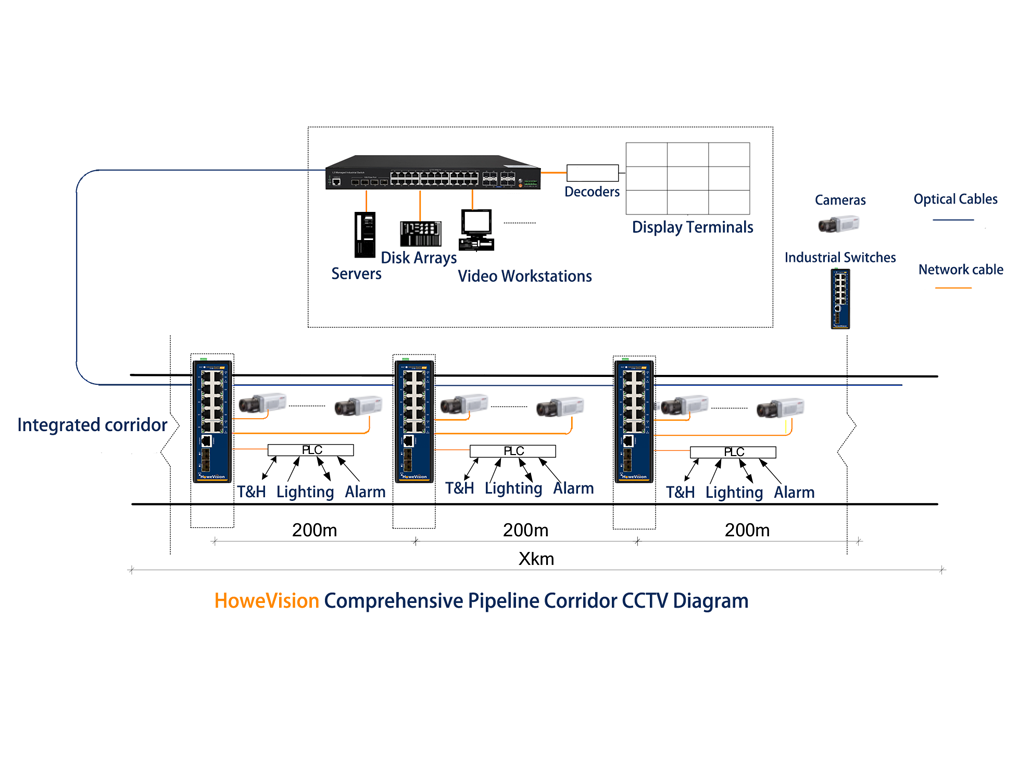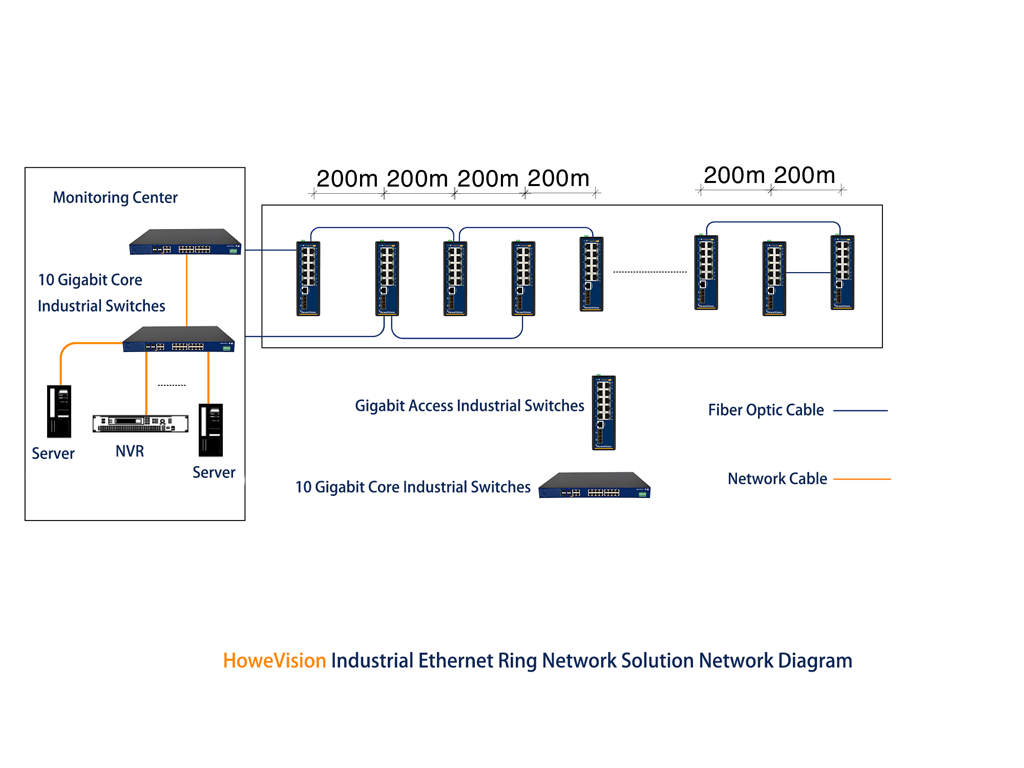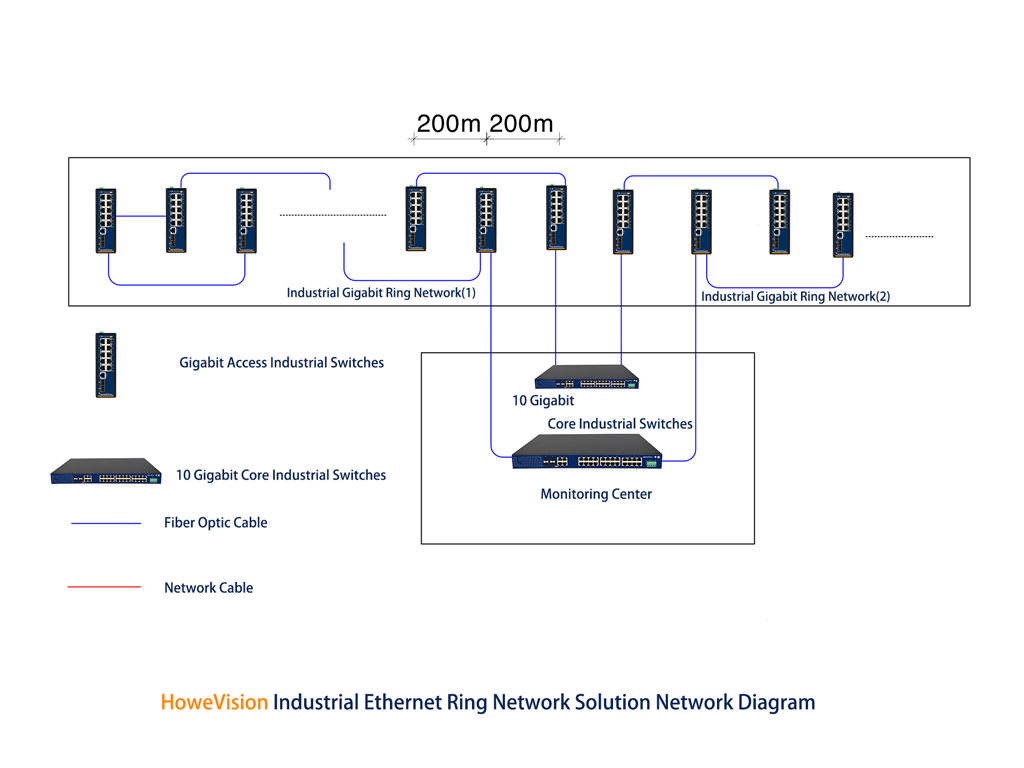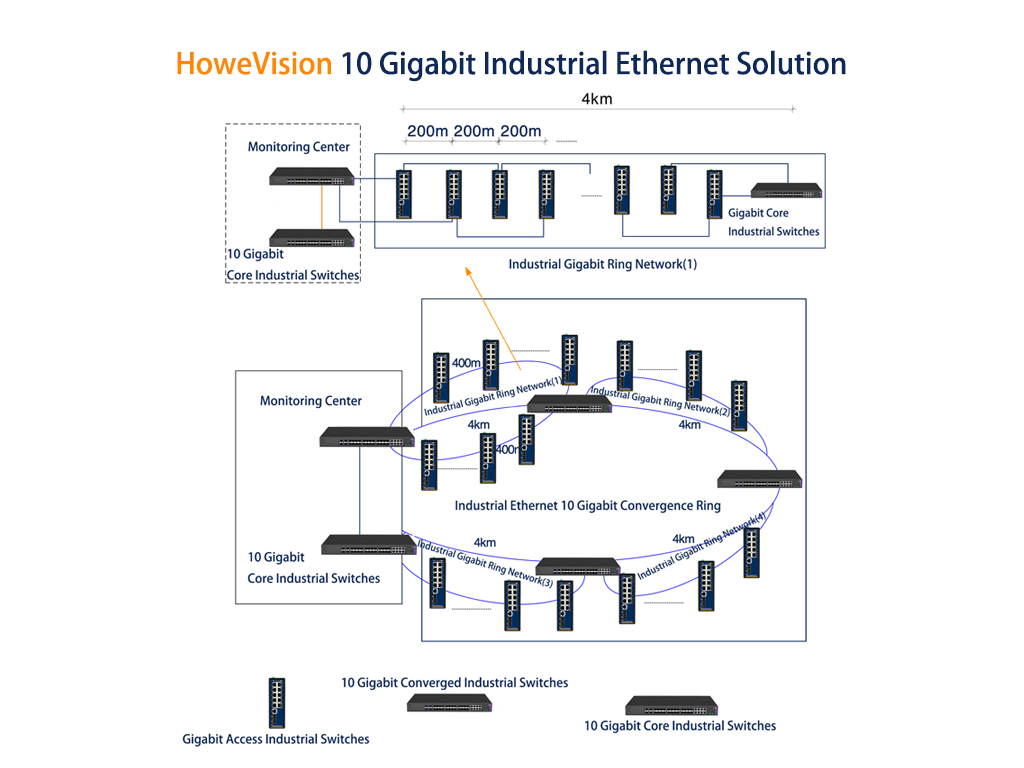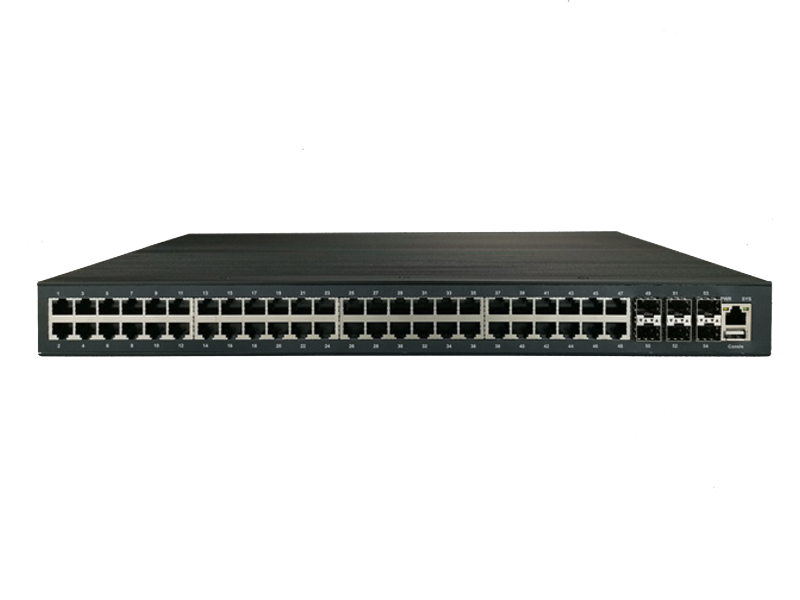Smart City Transmission Solution
Table of Contents
Introduction.
The smart city uses information and communication technology to sense, analyze and integrate various essential details of the core system of city operation. Thus, it can respond intelligently to different demands, including people’s livelihood, environmental protection, public safety, urban services, and industrial and commercial activities. The essence is to use advanced information technology to achieve intelligent management and operation of the city. In turn, it creates a better life for the people in the city and promotes the balanced and sustainable growth of the town.
The smart city is a new model of urban development based on the combination of networks such as the Internet, Internet of Things, telecommunication network, broadband network, and wireless broadband network; with the main features of highly integrated wisdom technology, high-end development of wisdom industry and efficient and convenient wisdom service for the people. After industrialization, electrification, and informatization, wisdom is another breakthrough in the scientific and technological revolution. Using wisdom technology to build a smart city is the trend and characteristic of urban development today.
The “smart city” concept is to see the city itself as an ecosystem. The city’s citizens, transportation, energy, commerce, communication, and water resources form a subsystem. These subsystems include a universally connected, mutually reinforcing, and mutually influencing whole. In the past, the relationship between these subsystems could not provide integrated support for urban development due to the lack of technological power in urban development. With the new generation of information technology, such as the Internet of Things, cloud computing, and decision analysis and optimization, in the future. Through conceptualization, IoT, intelligence, physical infrastructure, and information infrastructure connect the city’s social infrastructure and business infrastructure. It becomes a new generation of intelligent infrastructure that makes the relationship between various fields and subsystems in the city visible. It is like fitting the city with a networked nervous system to become a system that can command decisions, react in real-time, and operate in a coordinated manner. A smart city means information sharing and joint operations between different departments and systems in the city. We can make more rational use of resources, make the best urban development and management decisions, and promptly predict and respond to emergencies and disasters.
The Pain Pints Analysis of Intelligent City Communication.
- To adapt to the high temperature and hot and humid environment of urban intersections, industrial Ethernet switches must design according to wide temperature and moisture-proof; Operating temperature: -40~80℃ Storage temperature: -40~85℃, storage humidity: 0%~95%, no condensation.
- The harsh environment of urban intersection cabinets requires industrial Ethernet switches with strong dustproof, anti-vibration, anti-electromagnetic interference, long meantime without failure, etc.
- The equipment must be compact and easy to be installed in the intersection cabinet.
- To ensure the reliability of communication, a Gigabit or 100 Gigabit redundant ring network with a fast self-healing function is required. When the communication network fails, it can automatically and smoothly switch to the redundant backup line, with a self-healing time of less than 20ms.
- To ensure the data security of remote monitoring, the industrial Ethernet switch needs to have comprehensive network security settings.
Electronic Police Communication Solution
According to the demand of the network of the electronic police monitoring system and the careful consideration of the cost performance and network reliability of the industrial Ethernet switch, HoweVision Gigabit industrial Ethernet switch is selected. We choose HoweVision Gigabit industrial Ethernet switch to form a regional redundant ring network to ensure stable, reliable, and safe system transmission. Fiber optic transceivers are used to centralize the video from the four directions of the intersection to the on-site industrial control machine. The following network solutions are proposed.
Transmission Solution Analysis
HoweVision Gigabit industrial Ethernet switch is used to build a redundant ring network based on TCP/IP protocol backbone layer. The whole network has a high-speed system self-healing capability, and its self-healing time is within 20ms. According to the layout of the traffic light control and surveillance camera, it is divided into several areas to transmit the power and video signals of the intersection.
HoweVision Gigabit Industrial Ethernet switches are installed in the signal cabinets of the intersections in each region and build a Gigabit redundant ring network. It supports ring network redundancy protocols to guarantee network communication’s disturbance-free switching and a self-healing time of less than 50ms. Ethernet switches in each region through fiber-optic connection. The VLAN function of HoweVision is used to isolate the services such as signal control, HD video monitoring, and integrated environment monitoring, and each service access port (switch port) of HoweVision is set with a corresponding bandwidth limitation. At the same time, other ports that are not connected to the service are disabled to prevent accidental access to the switch network interruptions and other security issues.
A fiber optic transceiver transfers the video from each direction of the intersection to the site IPC as local storage. Then the captured pictures, video recordings, and a small portion of real-time videos in the industrial control machine are uploaded to the monitoring center via HoweVision Gigabit Industrial Ring.
HoweVision Gigabit Industrial Ethernet Switch adopts a fanless chassis cooling design and IP40 protection level, easy to install in the intersection cabinet or chassis. It can adapt to harsh working environments such as substantial electromagnetic interference, dust, high temperature, low temperature, humidity, vibration, static electricity, etc.
Program Technical Advantages.
High Security
Provide a complete security architecture, covering all levels of the system, using a series of security measures, including authentication, authorization, port binding, VLAN, etc., to ensure the network’s security.
High Efficiency
It provides a high-quality QoS guarantee, provides different priority services for various services, and determines the bandwidth according to the priority, ensuring the high efficiency of the whole network data transmission, As well as setting bandwidth limits for the corresponding service ports.
High Reliability
Supports industry-leading ring network redundancy technology, high-quality industrial products, redundant power supply design, and manageable end-to-end technology to meet the system requirements for reliability.
Easy to Maintain Network
Besides providing convenient Web access, it also supports SNMP and RMON management, suitable for realizing unified control of the whole network with third-party devices.
Intelligent Pipe Corridor Communication Program
Communication System Network of the Pipeline Corridor
According to the technical specifications of the integrated pipe corridor, the integrated pipe corridor is designed with a fire partition every 200 meters, and firewalls and fire doors are set. A comprehensive pipe corridor may be divided into a pipeline compartment, electric power compartment, and gas compartment. The choice of underground integrated pipe corridor communication scheme first needs to consider the demand of its business bandwidth, that is, the choice of how much bandwidth to build the industrial ring network. Its bandwidth must meet the existing business bearing while meeting the subsequent expansion of business.
With 200m as a partition node, the business with the most significant bandwidth demand and the number of ports required are as follows.
The table shows that the single-compartment, double-compartment, and three-compartment service port demands are 11, 18, and 25, respectively, with relatively significant differences in quantity and rather large differences in corresponding equipment port patterns. Therefore, this program will be equipped with the corresponding form of equipment models for different cabin types and two fire partitions that a weak power room is responsible for. Each invalid power room is configured with two sets of equipment or placed separately in the corridor, and the ports and bandwidth of each weak power room are twice that of the fire partition. See the equipment configuration list for specific configurations.
In addition, the bandwidth requirements of different compartment types are other, and the compartment type and length of the corridor have to be taken into account when analyzing the bandwidth of a single section of the gallery.
Comprehensive consideration of the rest of the business needs, video surveillance services in the initial design, and single-loop service utilization are not easy to be too high initially. Initially, the bandwidth of the video surveillance class is suitable for design in less than 50% utilization, assuming a single gigabit ring business configuration of 500M. According to the previous calculation, a single 200-meter node needs video surveillance services in 24M, and then a 1000M ring can contain 20 switches, that is, 4km corridor configuration 1 1000M ring.
Comprehensive Pipeline Corridor Communication System Topology
Although the underground comprehensive pipeline corridor cities across the country are starting one after another, the size of each regional project varies, and the construction of sub-sections and the length of the corridor to be built are different. Therefore, the choice of communication scheme must also adapt to the requirements of various construction scales, meet the existing construction scale requirements, and adjust to the subsequent expansion needs.
Application topology demonstration ①: integrated pipe corridor length less than 4km
The length of the pipeline corridor is less than 4km. The program considers the formation of a Gigabit industrial Ethernet ring and the configuration of two sets (one primary and one standby) of Gigabit three-tier core switches in the monitoring center server room. One set of Gigabit access Ethernet switches is configured every 200m in the integrated pipeline corridor, and the access switches are interleaved to form a Gigabit ring network.
Application topology demonstration ②: The length of the integrated pipeline corridor is between 4km and 12km
Two to three Gigabit industrial Ethernet access rings are considered, and two sets of Gigabit Layer 3 core switches (one primary and one standby) are configured in the monitoring center room. The ring network is formed with the Gigabit core switches every 4km. One Gigabit access Ethernet switch is configured every 200m in the integrated corridor, and the access switches are interleaved to form a Gigabit ring network.
The program can also adopt the program of 10 Gigabit ring overlapped with Gigabit access ring, similar to demonstration ③.
Application topology demonstration ③: Integrated pipeline corridor length greater than 8-12km
When the length of the integrated pipeline corridor is longer, the video service volume increases cumulatively, the gigabit access ring convergence needs to be converted, and a 10-gigabit convergence ring needs to be established. Monitoring center room configuration two sets of 10 Gigabit core switch, comprehensive pipeline corridor configuration 1 set of 10 Gigabit convergence switch every 4km, and the core switch to form a 10 Gigabit convergence ring. At the same time, 1 Gigabit access ring needs to be set up for every 4km.
In addition, the program also needs to consider the various flexible situations. For example, it can be connected with industrial-grade transceivers for some distant outlets. The above demonstration ① ② ③ can support the POE power supply to the camera, and the corresponding configuration will be different, see the configuration list for details.
For industrial ring networks, topology can be briefly summarized as follows.
If the length of the project corridor is less than 4km, you can consider using industrial Ethernet switching to set up a Gigabit ring network.
If the length of the project corridor is 4km to 12km, consider two or 3-gigabit ring networks, or use a 10G ring network to form the backbone, and then embed the gigabit ring network convergence.
If the length of the project corridor is more than 8-12km, we recommend using a 10G ring network to form the backbone and then converging multiple gigabit ring networks to realize.
Essential Products of Smart City Recommended
10 Gigabit Layer 3 Core Ethernet Switches
- Key Feature:
- Cache up to 12Mbit can meet the smooth transmission of 4K video
- Support IEEE802.3/802.3u/802.3ab/802.3z/802.3x store-and-forward mode
- Supports large backplane bandwidth and large switch cache to ensure wire-speed forwarding of all ports
- Support ITU G.8032 standard ERPS ring network protocol, self-healing time less than 20ms
- Support the international standard IEEE 802.3D/W/S standard STP/RSTP/MSTP protocol
- Support static routing, RIPv1/v2, OSPFv2
- Redundant dual power supply DC/AC power specifications optional, anti-reverse connection, over-current protection function
- -40℃~85℃ wide temperature design, ensure the equipment adapts to the various harsh field environment
Industrial 12-Ports Gigabit L2+ Managed Ethernet switch
- Model: IS50822GFM
- L2+ Managed industrial Gigabit Ethernet switch,
- Support 802.1Q VLAN, Mirroring, Port isolation, IGMP, DHCP, LLDP, DDM.
- Support spanning tree STP(802.1D) and RSTP(802.1W). MSTP(802.1S).
- Support management through WEB, CLI, TELNET, SSH, and SNMP(V1, V2, V3).
- 5 years warranty.
- OEM/ODM is available
- Small MOQ is welcome
Industrial Fast Ethernet Switch, 4-Ports Fast Ethernet RJ45, 2-Ports 100BASE-FX SFP Uplink
Successful Cases of Smart City
- Hebei Hengshui City Intelligent Traffic Electronic Police + Card Crossing Monitoring Project
- Beijing Public Security Traffic Administration Signal Control System Phase III Industrial Switching Project
- Beijing Mobile Changping Road Bureau Road Monitoring Project
- 320″ Project in Suzhou Industrial Park, Jiangsu Province
- Suqian Industrial Park Project in Jiangsu Province
- Lanzhou – Digital Lanzhou “Telematics” Intelligent Transportation Project
- Hubei Yichang Public Security Bureau Intelligent Traffic Electronic Police + Card Crossing Monitoring + Signal Control + Traffic Induction System Upgrade Project
- Beijing Public Security Traffic Management Bureau Signal Control System Phase IV Industrial Switching Project
- Suzhou Smart Driving School Training System
- Inner Mongolia Hulunbeier City Intelligent Traffic Electronic Police + Signal Control System
- Hunan Province Chenzhou intelligent traffic electronic police + bayonet monitoring + signal control system
- Wisdom Longgang
- Yan’an City Public Security Bureau HD video monitoring command system
- Chenggong New District, Kunming City, Yunnan Province
- High-altitude Sky Network Project in Chang’an Town, Dongguan, Guangdong Province
- Chongqing Safe City
- Beijing Daxing District Public Security Monitoring
- Zhejiang Haining Safe City
- Anhui Feidong County Skynet Project
- Shenzhen Luohu Safe City
- Zhangjiagang Safe City Monitoring
- Shaanxi Province Safe City
- Nanjing Safe City
- Xiamen Safe City
- Suqian City, Jiangsu Province Public Security Bureau old office building network equipment and installation project
- Internal voice dispatching system of Shaoyang Public Security Bureau in Changsha
- Jiangsu Suqian police school information network
- Pingdu Safe City Project in Shandong Province
- Hunan Loudi Sky Network Project
- Haidian District Grid-based Video Monitoring Project
- Public Security Monitoring in Ingisha County, Kashgar Region

